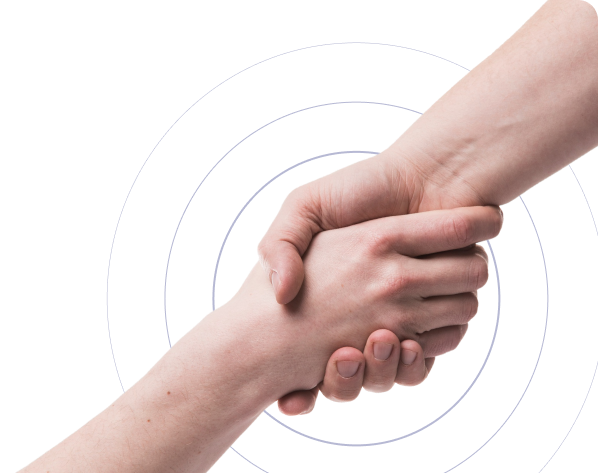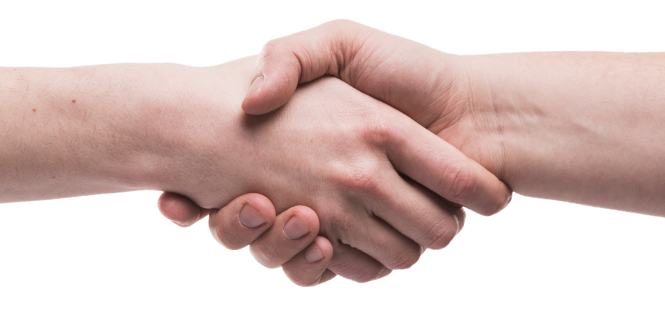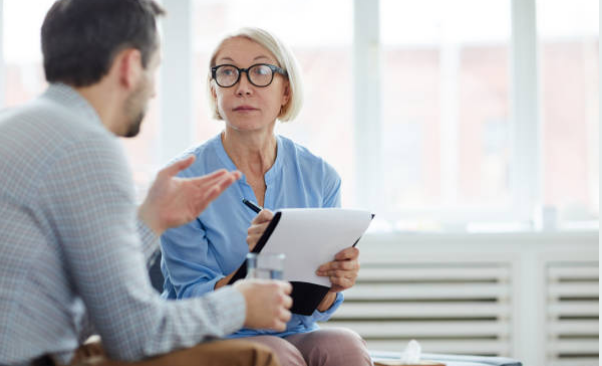Manic Depression Overview
Manic depression, also known as bipolar disorder, is a complex and often misunderstood mental health condition that affects millions of individuals worldwide. It is characterized by dramatic shifts in mood, energy levels, and activity levels, leading to episodes of intense highs (manic episodes) and lows (depressive episodes). In this article, we delve into the essential aspects of manic depression, shedding light on its symptoms, potential causes, different types, and the diagnostic process.
Living with manic depression can be challenging, both for those who experience it and their loved ones. By understanding the intricacies of this disorder, we hope to increase awareness and promote empathy for individuals facing its impact on their lives.
What is Manic Depression?
It is also known as bipolar disorder and is a mental health condition characterized by extreme shifts in mood, energy levels, and activity levels. Individuals with manic depression experience episodes of both mania and depression, which are the two main phases of the disorder.
Bipolar disorder can significantly impact a person’s daily life, relationships, and overall well-being. The exact cause of manic depression is not fully understood, but it is believed to involve a combination of genetic, biological, and environmental factors. Treatment for manic depression typically involves a combination of medication, such as mood stabilizers, and psychotherapy.
Manic Depression Symptoms
Manic Episode Symptoms:
- Intense euphoria or extreme joy.
- Increased energy and restlessness.
- Decreased need for sleep.
- Rapid and excessive talking (pressured speech).
- Racing thoughts and difficulty concentrating.
- Grandiose beliefs or inflated self-importance.
- Reckless and impulsive behavior.
- High irritability or agitation.
Depressive Episode Symptoms:
- Persistent sadness or emptiness.
- Loss of interest in once-enjoyable activities (anhedonia).
- Changes in appetite and weight.
- Sleep disturbances (insomnia or oversleeping).
- Fatigue or loss of energy.
- Feelings of worthlessness or excessive guilt.
- Difficulty concentrating and making decisions.
- Thoughts of death or suicide.
Mixed Episode Symptoms:
- Symptoms of both mania and depression occurring simultaneously.
- Intense confusion, irritability, and agitation.

Skip To:
Learn More:
Manic Depression (Bipolar Disorder) Facts
Bipolar Disorder:
- Mood Episodes: Characterized by distinct episodes of mania/hypomania and depression.
- Duration: Mood episodes can last for days, weeks, or months.
- Triggers: Episodes can occur without external triggers, and mood shifts are often unrelated to specific events.
- Self-Image: Individuals typically have a stable sense of self and identity.
- Impulsivity: Impulsive behaviors may occur during manic episodes.
- Treatment: Mood-stabilizing medications are often prescribed, along with psychotherapy.
Types of bipolar disorder:
There are several types of bipolar disorder, including:
- Bipolar I disorder: Characterized by manic episodes lasting at least seven days or severe manic symptoms requiring immediate hospitalization.
- Bipolar II disorder: Involves a pattern of depressive episodes and hypomanic episodes, but not full-blown mania.
- Cyclothymic disorder: Marked by numerous periods of hypomanic and depressive symptoms that last for at least two years (one year for children and adolescents).
Symptoms:
The symptoms of bipolar disorder vary depending on the mood episode:
- Manic episodes: Elevated mood, increased energy, racing thoughts, impulsivity, decreased need for sleep, excessive talking, grandiosity, and risky behavior.
- Hypomanic episodes: Similar to manic episodes but with less severity and a shorter duration.
- Depressive episodes: Persistent sadness, loss of interest or pleasure in activities, changes in appetite and sleep patterns, fatigue, feelings of guilt or worthlessness, difficulty concentrating, and thoughts of death or suicide.
Impact on daily life:
- Bipolar disorder can significantly impact various aspects of a person’s life, including relationships, work or school performance, and overall quality of life. However, with proper treatment and support, individuals with bipolar disorder can manage their symptoms effectively and lead fulfilling lives.
End the Emotional Pain. Get Your Life Back.
Feeling Depressed, Anxious or Struggling with Mental Health Illness? Get Safe Comfortable Mental Health Dual Diagnosis High-Quality Therapy From Counselors That Care. Begin Your Recovery Now.
Hotline: (509) 348-4077

Manic Depression Statistics
Characterized by alternating periods of mania and depression, this disorder can have a profound impact on individuals’ lives and their ability to function. In this article, we explore various statistical insights into manic depression, shedding light on its prevalence, demographics, comorbidities, and treatment patterns. Understanding the numbers behind this condition is essential for raising awareness, improving diagnosis and treatment, and supporting those affected by manic depression.
- Prevalence of Manic Depression: Manic depression is a relatively common mental health disorder worldwide. According to the World Health Organization (WHO), approximately 1% of the global population is affected by bipolar disorder. While the prevalence may vary across regions and age groups, it remains a significant public health concern in many countries.
- Age of Onset and Gender Distribution: Bipolar disorder can manifest at any age, but it often emerges in late adolescence or early adulthood. Studies indicate that the average age of onset is around 25 years, although some cases can begin in childhood or later in life. Additionally, there is a gender difference in the distribution of the disorder, with women more likely to experience rapid-cycling bipolar disorder, and men more prone to developing bipolar I disorder.
- Comorbidities and Co-occurring Conditions: Individuals with manic depression often experience other mental health conditions alongside their bipolar symptoms. Common comorbidities include anxiety disorders, substance use disorders, attention-deficit/hyperactivity disorder (ADHD), and eating disorders. Recognizing these co-occurring conditions is vital for providing comprehensive and effective treatment.
2.4%
The global prevalence of the bipolar disorder
Source: CDC
25 years
Bipolar disorder typically emerges in late adolescence or early adulthood
Source: NIMH
3:1
BPD is more commonly diagnosed in females
Source: NIH
Manic Depressive Causes

The causes of manic depression, also known as bipolar disorder, are complex and not entirely understood. It is believed that multiple factors contribute to the development of the condition, including genetic, biological, and environmental influences. Here are some key factors associated with the causes of manic depression:
- Genetics: There is a strong genetic component to bipolar disorder. Individuals with a family history of the condition are at a higher risk of developing it themselves. Specific genes or gene variations may play a role in predisposing some individuals to bipolar disorder. However, it’s important to note that having a family history of manic depression does not guarantee that someone will develop the disorder, as environmental factors also come into play.
- Neurobiological Factors: Changes in brain structure and function have been observed in individuals with bipolar disorder. Certain neurotransmitters, such as serotonin, dopamine, and norepinephrine, play a critical role in regulating mood, and imbalances in these neurotransmitters are associated with mood disorders like bipolar disorder.
- Environmental Triggers: Environmental stressors and life events can act as triggers for the onset or exacerbation of bipolar disorder in individuals who are genetically predisposed. Traumatic experiences, major life changes, substance abuse, and disruptions in circadian rhythms are among the environmental factors that may contribute to the development of manic depression.
- Imbalance in Circadian Rhythms: Circadian rhythms are the body’s internal clock that regulates sleep-wake cycles and other physiological processes. Disruptions in circadian rhythms have been linked to mood disorders, including bipolar disorder. Irregular sleep patterns or disturbances can influence the occurrence of manic or depressive episodes.
- Neurotransmitter Dysregulation: As mentioned earlier, imbalances in neurotransmitters can impact mood regulation. For instance, an increase in dopamine levels during manic episodes may lead to heightened euphoria and impulsivity, while decreased serotonin levels during depressive episodes can contribute to feelings of sadness and despair.
- Hormonal Factors: Some research suggests that hormonal imbalances may contribute to the development of bipolar disorder. Changes in hormone levels, particularly related to the endocrine system and stress response, have been associated with mood disturbances.
Get Help. Get Better. Get Your Life Back.
Searching for Accredited Dual Diagnosis Mental Health Centers Near You?
Even if therapy failed previously, or are in the middle of a difficult crisis, we stand ready to support you. Our trusted behavioral health specialists will not give up on you. When you feel ready or just want someone to speak to about counseling alternatives to change your life call us. Even if we cannot assist you, we will lead you to wherever you can get support. There is no obligation. Call our hotline today.
FREE 24/7 Dual Diagnosis Mental Health Services HotlineManic Depression vs Bipolar
Manic Depression:
“Manic depression” is an older term for bipolar disorder. It was commonly used before the introduction of the Diagnostic and Statistical Manual of Mental Disorders (DSM) and other standardized diagnostic criteria. It is an accurate description of the disorder’s main features, which involve alternating periods of mania and depression.
Bipolar Disorder:
“Bipolar disorder” is the modern and more widely used term to describe the same condition previously known as manic depression. The term “bipolar” refers to the two extreme mood states experienced by individuals with the disorder: mania (elevated mood) and depression (low mood). Bipolar disorder is now classified according to specific subtypes, such as Bipolar I, Bipolar II, and Cyclothymic Disorder, depending on the severity and duration of manic and depressive episodes.
In summary, “manic depression” and “bipolar disorder” refer to the same mental health condition characterized by episodes of mania and depression. The use of the term “bipolar disorder” is more commonly preferred in modern clinical settings due to its standardized and precise classification according to diagnostic criteria. However, it’s essential to recognize that both terms describe the same underlying condition and require similar approaches to diagnosis and treatment.
Signs of Manic Depressive Disorder
Manic depression, also known as bipolar disorder, is characterized by alternating periods of intense highs (manic episodes) and lows (depressive episodes). During manic episodes, individuals may experience euphoria, heightened energy, and impulsivity, while depressive episodes bring profound sadness, loss of interest, and thoughts of death. Some individuals may also experience mixed episodes, where symptoms of mania and depression occur simultaneously. These signs can significantly impact daily functioning and quality of life. Early recognition and seeking professional help are essential for accurate diagnosis and effective management of this complex mental health condition.

First-class Facilities & Amenities
World-class High-Quality Mental Health Services & Behaviroal Health Substance Abuse Treatment
Rehab Centers TourRenowned Mental Health Centers. Serene Private Facilities. Inpatient Rehab Programs Vary.
Mental Health Helpline: (509) 348-4077Proven recovery success experience, backed by a Team w/ History of:
15+
Years of Unified Experience
100s
5-Star Reviews Across Our Centers
10K
Recovery Success Stories Across Our Network
- Low Patient to Therapist Ratio
- Comprehensive Dual-Diagnosis Treatment
- Complimentary Family & Alumni Programs
- Coaching, Recovery & Development Events
- Comfortable Onsite Medical Detox Center
Treatment for Manic Depression at We Level Up
Treatment for manic depression, also known as bipolar disorder, typically involves a combination of medication, psychotherapy, and lifestyle adjustments. The goal of treatment is to stabilize mood, manage symptoms, and improve overall functioning. Here are the main components of treatment for manic depression:
- Medication:
- Mood Stabilizers: Lithium, valproic acid, and lamotrigine help control manic and depressive episodes and prevent mood swings.
- Antipsychotic Medications: These may be used in combination with mood stabilizers to manage severe manic symptoms or mixed episodes.
- Antidepressants: Used cautiously to address depressive symptoms but are generally avoided in isolation to prevent triggering manic episodes.
- Psychotherapy:
- Cognitive Behavioral Therapy (CBT): Helps recognize and modify negative thought patterns and behaviors, and teaches coping strategies to manage stress and triggers.
- Interpersonal and Social Rhythm Therapy (IPSRT): Focuses on stabilizing daily routines and maintaining healthy relationships to regulate mood.
- Family-Focused Therapy: Involves family members to provide support, education, and improve communication within the family.
- Lifestyle Adjustments:
- Regular Sleep Patterns: Maintaining consistent sleep schedules is crucial to managing bipolar symptoms and preventing mood swings.
- Stress Management: Learning and practicing stress-reduction techniques, such as mindfulness and relaxation exercises, can be beneficial.
- Substance Use: Avoiding alcohol and recreational drugs is essential, as they can exacerbate mood swings and interfere with medications.
- Support Groups:
- Joining support groups or attending psychoeducational programs to connect with others, share experiences, and learn coping strategies.
It’s essential to work closely with a mental health professional to develop an individualized treatment plan tailored to the specific needs and symptoms of the person with bipolar disorder. The treatment plan may evolve over time, depending on the individual’s response to interventions and the course of the illness. With proper treatment and support, many individuals with bipolar disorder can lead fulfilling lives and effectively manage their symptoms. Early intervention and ongoing support are crucial for managing manic depression and improving the overall well-being of individuals with this condition.
World-class, Accredited, 5-Star Reviewed, Effective Mental Health Dual Diagnosis Programs. Complete Integrated Inpatient Rehab with Free Post Discharge Therapy Planning.
Hotline: (509) 348-4077End the Emotional Pain Rollercoaster. Gain Stability & Happiness Through Recovery Treatment. Start Mental Health Counseling Today. Get Free No-obligation Guidance by Behaviroal Health Specialists Who Understand Mental Health Recovery.
Popular Manic Depression FAQs
-
Is manic depression bipolar?
Yes, manic depression is another term for bipolar disorder. They refer to the same mental health condition characterized by mood swings between manic and depressive episodes.
-
Is manic depression the same as bipolar?
Yes, manic depression is the same as bipolar disorder. Both terms describe the condition characterized by mood swings between manic and depressive episodes.
Watch How to Improve Mental Health? 8 Steps & Tips for Maintaining Your Mental Wellbeing. Find Top Mental Health Tips & Anxiety Tips Advice from a Therapist.
Experience Transformative Recovery at the We Level Up Treatment Center.
See our authentic success stories. Get inspired.
Get the help you deserve.



Start a New Life
Begin with a free call to a behavioral health treatment advisor. Learn more about our dual-diagnosis programs. The We Level Up treatment center network delivers recovery programs that vary by each treatment facility. Call to learn more.
- Personalized Care
- Caring Accountable Staff
- World-class Amenities
- Licensed & Accredited
- Renowned w/ 5-Star Reviews
We’ll Call You
Search We Level Up WA Mental Health Manic Depression Topics & Resources
Sources
- National Institute of Mental Health (NIMH) – Bipolar Disorder: https://www.nimh.nih.gov/health/topics/bipolar-disorder/
- NIMH – Borderline Personality Disorder: https://www.nimh.nih.gov/health/topics/borderline-personality-disorder/
- Substance Abuse and Mental Health Services Administration (SAMHSA) – Bipolar Disorder: https://www.samhsa.gov/find-help/disorders/bipolar-disorder
- SAMHSA – Borderline Personality Disorder: https://www.samhsa.gov/find-help/disorders/borderline-personality-disorder
- National Alliance on Mental Illness (NAMI) – Bipolar Disorder: https://www.nami.org/About-Mental-Illness/Mental-Health-Conditions/Bipolar-Disorder
- NAMI – Borderline Personality Disorder: https://www.nami.org/About-Mental-Illness/Mental-Health-Conditions/Borderline-Personality-Disorder
- Centers for Disease Control and Prevention (CDC) – Mental Health – Bipolar Disorder: https://www.cdc.gov/mentalhealth/basics/bipolar.html
- CDC – Mental Health – Borderline Personality Disorder: https://www.cdc.gov/mentalhealth/basics/borderline.html
- Office on Women’s Health (OWH) – Bipolar Disorder: https://www.womenshealth.gov/mental-health/mental-health-conditions/bipolar-disorder
- OWH – Borderline Personality Disorder: https://www.womenshealth.gov/mental-health/mental-health-conditions/borderline-personality-disorder